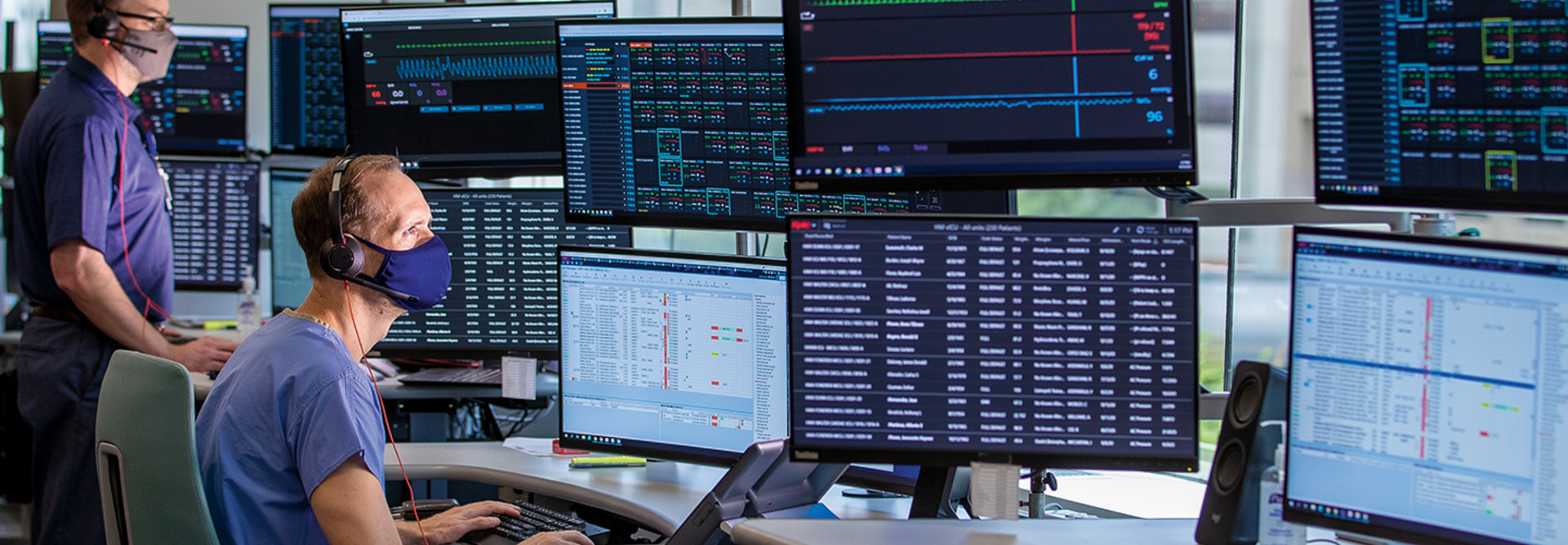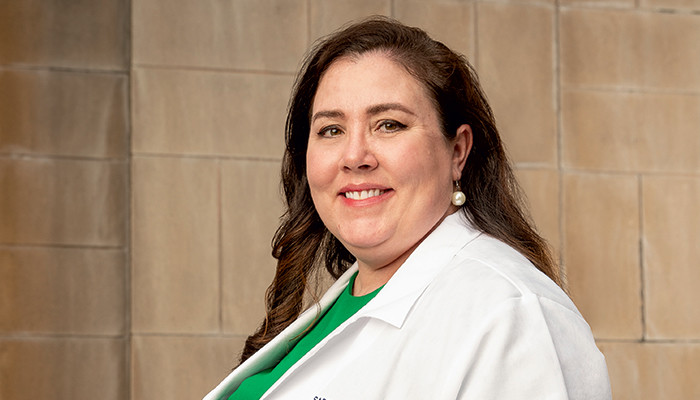Before the pandemic, two Northwell hospitals had their ICU rooms outfitted with cameras but hadn’t yet completed tele-ICU onboarding. Every hospital is different, Berman notes, and time is needed for teams to adjust and align.
But in midspring, as the disease struck New York hard, there was no time for that.
“We got the call: ‘We’re getting slammed. We need help,’” says Berman. “We said, ‘OK, turn it on. We’ll at least have eyes on them.’”
Command center staff launched tele-ICU support for both Northwell hospitals, with remote nurses and intensivists providing cohesive guidance to support decision-making with bedside teams as the situation progressed.
Tele-ICU staff also conducted real-time documentation, communicated patient conditions to help nurses bundle care and minimize PPE use, and served as a safety net when frontline staffers were overwhelmed.
“We could alert them when there was a patient in trouble because we could see the trend — sometimes more quickly than you would at the bedside — because of the amount of information we’re able to glean at one time,” says Berman, adding that patients appreciated the human connection during a time of intense isolation.
“We could camera in and say, ‘Hello, we’re watching. You’re OK,’” she says.
Sutter Health Makes Critical Connections with Patients
Like Northwell, Sutter Health in California fast-tracked some of its tele-ICU plans in response to COVID-19.
Sutter has relied on a tele-ICU setup for several years, with two hubs supporting more than 300 ICU rooms in 20 of its 22 hospitals. Earlier this year, plans were underway to double the number of critical care beds at Sutter Roseville Medical Center, with a grand opening set for late May.
When it became clear those beds would be needed sooner, Sutter moved to open the facility early.
For remote clinicians, in-room technology performs double duty, says Dr. Vanessa Walker, medical director of the Sutter Valley Area e-ICU in Sacramento: It virtually brings them into the room while preserving a distance that can be useful in high-stress situations.
“It is phenomenal how much you can learn about somebody through the cameras and utilizing the technologies available to us,” she says. “I feel like I am in the room talking to the patient.”
At the same time, she says, when a physician runs codes from the command center, he or she is a step removed.
“Because of that remote sensation, you’re able to treat it more the way that it should be: a protocolized approach,” says Walker.













